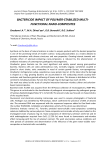Статьи журнала - Журнал стресс-физиологии и биохимии
Все статьи: 984
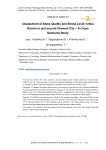
Статья научная
The city bus drivers are more prone to various physical and mental stress due to the heavy traffic in the city. They are also on shift work causing decrease in the sleep quality which results in increase in stress level and negatively impacts on the health and quality of life. Objective: To assess the stress level among bus drivers in and around city of Chennai Methods: A Cross-sectional study was conducted on a group of 100 city bus drivers from January 2019 to March 2019. The "Perceived Stress Scale (PSS)" questionnaire was used to measure stress level. The Pittsburgh Sleep Quality Index (PSQI) was used to measure of sleep quality. Results: The PSQI scores were poor in 89% of the studied population. The mean PSQI scores were 10.05 and standard deviation of 3.016. Scores of the Perceived Stress Scale shows that 23 % had low stress, 28 % had moderate stress and 49 % had high stress levels. The study shows significant association between stress levels and poor sleep quality. Conclusion: The result of the study show that the bus drivers in the city are stressed and the stress is high during middle age.
Бесплатно
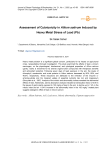
Assessment of cytotoxicity in Allium sativum induced by heavy metal stress of lead (Pb)
Статья научная
Heavy metal pollution is a significant global concern, particularly for its impact on agricultural crops, necessitating thorough investigation. This study examined the effects of lead, a known carcinogen, on the physiological, biochemical, and cytological properties of Allium sativum (garlic). Garlic is renowned for its diverse organo-sulfur compounds with therapeutic benefits and antioxidant potential. Following seven days of lead exposure in the soil, the levels of chlorophyll, carotenoids, and crude proteins in Allium sativum decreased by 80%, 68%, and 46.9%, respectively. These reductions are attributed to the inhibition of the enzyme α-aminolevulinate and the impaired uptake of essential nutrients like iron and magnesium (Burzyński et al., 1987). Analysis of the mitotic and abnormality indices revealed the detrimental effects of lead. Additionally, atomic absorption analysis indicated a translocation factor of 0.89 in the leaves of garlic plants exposed to 100 mg/kg of lead in the soil. A decline up to 7.4% in the mitotic index and an 11.34% increase in the abnormality index in the 100 mgkg-1 treated plant suggest clastogenic effect of lead on Allium sativum.
Бесплатно
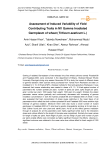
Статья научная
Sowing of radiated Germplasam of two-selected virus free wheat cultivars namely Pirsabak-98 and Fisalabad-2000, were conducted in the department of Botany, Shaheed Benazir Bhutto University Sheringal during crop season November 2016 to study the impact of different doses of gamma radiation. Both cultivars were purchased from Tarnab Farm Peshawar and later on irradiated to 5, 10, 20 Krad at NIFA. (Nuclear institute for food and agriculture Peshawar). It was observed that inverse relationship was created in doses of 5, 10, 15 Krad against number of parameters like number spikelet per plant, number of spike per plant, spike length per plant, grain number per plant, 1000 seeds fresh weight, 1000 grain dry weight. Similarly the stated parameter means values gradually and continuously decreases with increasing of gamma irradiation concentration in both the hybrids pirsabak-98 and Fisalabas-2000 of wheat. It was also evaluated that high concentration of doses cause restrictive in the mean figure of all parameters which reflect that both cultivars pirsabak-98 and Fisalabad-2000 were sensitive high intensity of gamma radiation...
Бесплатно
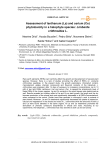
Статья научная
Rare earth elements (REEs) can harmfully affect the growth and development of several plant species. However, there is a lack of studies providing the effect of REEs on Limbarda crithmoides seedlings. In the present study, the growth parameters, chlorophyll content, macroelement uptake, phenolic compounds and flavonoid contents of the halophyte L. crithmoides were analysed, after 14 days of exposure to increasing concentrations (up to 10 µM) of two light REEs; lanthanum (La) and cerium (Ce), to assess the phytotoxicity level of these REEs in the chosen species. La and Ce contents in the plant tissues were determined as well. Results revealed an inhibitory effect of La and Ce on plant growth; the length and the dry biomass production of the shoots and roots significantly decreased in all REEs concentrations, when compared to the control. Similar trend was recorded in chlorophyll a and b contents in plant leaves. Moreover, La and Ce treatments significantly decreased the uptake of potassium, calcium and magnesium in the shoots and roots of L. crithmoides while the amounts of both La and Ce were found elevated in the same organs. All La and Ce treatments promoted the stimulation of phenolic compound biosynthesis in shoots and roots. According to our experiments, the halophyte L. crithmoides was very sensitive to both La and Ce toxicity.
Бесплатно
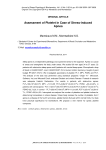
Assessment of platelet in case of stress-induced apnea
Статья научная
Sleep apnea is a independent pathology and a powerful stress for the organism. Apnea is a cause of stress and strengthens the body under stress. We studied 30 men aged 34 to 57 years: 22 patients with obstructive sleep apnea and 8 patients with central sleep apnea. We explored a drop of blood in HUMACOUNT, mod. HUMACOUNT (Firm Human GmbH, Germany), bought of grant budget RF/420/7-270/12. We investigated parameters of platelet: PLT, MPV, PDWс and PCT. The analysis of the data was performed using statistical programs “Origin 4.1’’ (Microsoft. Software, Inc) and Microsoft Excel, evaluated Student and criteria Pearson. Protocol of research was adequate Helsinki Declaration. Our results in patients with obstructive apnea: PLT=109x10 9±40x10 9l; MPV =7,7±3,0fl; PCT=0,08x10 -2±0,02x10 -2%; PDWС =33,4±3,6%; in patients with central apnea - PLT=142x10 9±50x10 9l; MPV=6,4±2,0fl; PCT=0,09x10 -2±0,03x10 -2%; PDWС=32,7±3,0; in control - PLT=250x10 9±40x10 9l; MPV=11,0±4,0fl; PCT=0,25x10 -2±0,05x10 -2%; PDWС=36,2±4,0%. Interrupted we analyzed the number of platelets and platelet indices for determining homeostasis in stress disease. Stress body reduces the number of platelets. But if apnea is a disease of the fourth rank stress, platelet factors fluctuate within normal limits. Our data have practical significance for biomedicine. We propose a new marker for apnea: platelet composes.
Бесплатно

Статья научная
The present study was planned with a view to assess the efficacy of Punarnava Mandura in Pandu roga on the basis of hematological parameters. Hematological parameters are one of the best tools to accessed anemia in individuals. Mandura Bhasma which is one of the good Haemetinic proved by various research works (experimental and clinical) is main ingredient of this formulation. Punarnava Mandura is a very well known drug by its “Raktajanya” property mentioned by Acharya Charaka.. On the basis of this, the reference regarding this in “Bhaishajya Ratnavali” was assessed for the preparation of this formulation used for management of Pandu clinically. Pandu roga is a disease characterized by pallor of body which strikingly resembles with ‘Anaemia’ of Modern science, disease referring to reduction in number of RBCs per cumm of blood and quantity of Hb resulting in pallor like other symptoms. Pandu Roga can be effectively compared with Anemia on the grounds of its similar signs and symptoms in the modern medicine, there is good treatment for Anemia with considerable result but that is only for acute deficiency Anemias, no significant therapy is there for chronic Anemia which occurs due to metabolic defects. So Ayurveda can provide better management. The world’s population is increasing at a rapid rate, with the result most of the people are living in un-hygienic, under-nourishing conditions and facing various effects of stress and strain factor. Illiteracy is also a problem in developing countries like India due to which great majority of people are living under poverty line, who cannot get quantitatively sufficient diet. Even pregnant ladies do not get proper nourishment due to which mother and infant mortality is at higher level.
Бесплатно
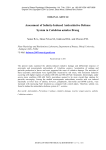
Assessment of salinity-induced antioxidative defense system in Colubrina asiatica Brongn
Статья научная
The present study examined the salinity-induced oxidative damage and differential response of enzymatic and nonenzymatic antioxidants of Colubrina asiatica. Acceleration of catalase and peroxide production in leaves and roots suggested the onset of oxidative damage. The activities of these enzymatic antioxidants were significantly increased by salt stress, with maximum induction occurring with higher regimes of salinity (200 mM and 300 mM NaCl treatment). Interestingly, under severe stress condition (300 mM NaCl), peroxidase seemed to be more crucial than catalase for peroxide scavenging. Among the studied nonenzymatic antioxidants, ascorbic acid was induced maximally at lower dose of salinity; however, polyphenols, flavonoids and DPPH activity glutathione were increased with increasing NaCl treatment as compared with control plants. Therefore, salinity was found to induce the antioxidative defense system of C. asiatica.
Бесплатно
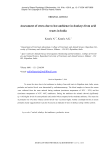
Assessment of stress due to hot ambience in donkeys from arid tracts in India
Статья научная
To assess the stress due to hot ambience in donkeys from arid tracts in Rajasthan state, India, serum prolactin and cortisol levels were determined by radioimmunoassay. The blood samples to harvest the serum were collected from the same animals during moderate (maximum temperature of 280C - 290C) and hot (maximum temperature of 450C- 460C) ambiences. During hot ambience the animals showed significantly (p T0.05) higher levels of serum prolactin and cortisol when compared to the moderate ambience. The mean rise in prolactin was 4.42 times whereas cortisol levels were 4.22 times higher. Further a multiple fold rise in serum prolactin clearly suggested that it can also be used as an indicator of stress in donkeys along with the cortisol.
Бесплатно
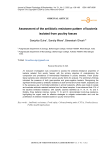
Assessment of the antibiotic resistome pattern of bacteria isolated from poultry faeces
Статья научная
An exclusive investigation was conducted to assess the antibiotic-resistance properties of bacteria isolated from poultry faeces, with the primary objective of understanding the composition and prevalence of Antimicrobial Resistance in poultry breeders. Fresh poultry faecal samples were collected from various poultry farms for analysis. The preliminary findings indicated the presence of both gram-positive and gram-negative bacteria. Recognizing the significant threat posed by antibiotic resistance to both animal and human health, especially due to the excessive use of controlled antibiotics in animal husbandry, efforts were made to isolate and evaluate antibiotic-resistant bacteria from the faecal samples. It was observed that 41% of the bacteria exhibited resistance, with specific colonies identified as 17, III, IV, 16, and II. Notably, three bacterial colonies, namely 17, III, and IV, demonstrated multi-drug resistance, highlighting the urgent need for effective strategies to mitigate contamination and curb the proliferation of antibiotic-resistant bacteria in poultry environments.
Бесплатно
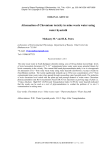
Attenuation of chromium toxicity in mine waste water using water hyacinth
Статья научная
The mine waste water at South Kaliapani chromite mining area of Orissa (India) showed high levels of toxic hexavalent chromium (Cr+6). Cr+6contaminated mine waste water poses potential threats for biotic community in the vicinity. The current field based phytoremediation study is an in situapproach for attenuation of Cr+6 mine waste water using water hyacinth (Eichhornia crassipes) weeds by rhizofiltration method. The weeds significantly reduced (up to 54%) toxicof Cr+6 contaminated mine waste water when passed through succeeding water hyacinth ponds. The reduction of toxic chromium level varied with the plant age and passage distance of waste water. Chromium phytoaccumulation and Bio-Concentration Factor (BCF) was maximum at growing stage of plant i.e. 75 days old plant. High BCF (10,924) and Transportation Index (32.09) for water hyacinth indicated that the weeds can be used as a tool of phytoremediation to combat the problem of in situ contamination in mining areas.
Бесплатно
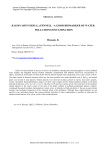
Bacopa monnieri (L.) Pennell -a good biomarker of water pollution/contamination
Статья научная
Effect of water pollution on Bacopa monnieri was studied by culturing their rooted propagules in various polluted water samples and Hoagland nutrient medium artificially contaminated with different micro-level concentrations of HgCl2. Anatomical observations of those plants showed safranin-stained masses deposited in the xylem vessels of stem. The plants treated in chemical solutions which are free from metallic ions, under threshold level of HgCl2, and control plants were devoid of such deposits. Similar deposits were observed in plants cultured in various local water samples. Atomic Absorption Spectrophotometric analyses of these water samples and the bioaccumulation property of the plant detected the presence of Al, As, Cd, Cr, Cu, Fe, Hg, Mn, Ni, Pb and Zn at various levels. The occurrence of the localized stained deposits in the xylem vessels of the stem of the plants cultured in polluted/contaminated aqueous medium, eventhough the growth medium contamination is micro-levels, is indicative of high sensitivity of Bacopa monnieri plants towards water pollution irrespective of the chemical nature of the pollutants. Although these stained deposits are not specific to any individual element that causes pollution, detection of water contamination is possible by observing the safranin-stained masses in the xylem vessels of this medicinal plant.
Бесплатно
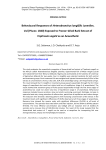
Статья научная
This study evaluates the anaesthetic properties of freeze-dried leaf extract of Tephrosia vogelii on the African catfish Heterobranchus longifilis juveniles. Experimental fish of Mean weight 115.00 were obtained from River Benue at Makurdi, Nigeria and acclimatized at the hatchery of University of Agriculture Makurdi for two weeks. Four H. longifilis were selected randomly for both control and treatment groups. Each treatment fish was weighed and injected intramuscularly 0.05ml of the extract at concentrations of 0.01, 0.02, 0.03, 0.04, 0.05 and 0.06g/l using a 2ml heparinized syringe. The result showed that H. longifilis in treatment group passed sequentially through the first three stages of anaesthesia but could not attain total loss of equilibrium (stage 4 of anaesthesia). The result showed that treatment group of fishes passed sequentially through the first three stages of anaesthesia but could not attain total loss of equilibrium (stage 4 of anaesthsia). Behavioural responses included mucus secretion, slow and erratic swimming, excrement discharge, increase in opercular beat rate, strong retention of reflex action, partial loss of equilibrium and colour change. The induction time showed a declining pattern with increasing concentration of the extract in the treatment levels with significant differences (P0.05). The most effective concentration was 0.06g/l with an induction time of 32.00±1.76 seconds and a recovery time of 182.00±3.46 minutes. The result of this study revealed that the freeze-dried bark extract of T. vogelii can be used as a tranquilizer for transporting fish over average distances, biopsy and morphological evaluation.
Бесплатно
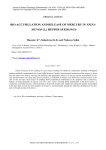
Bio-accumulation and release of mercury in Vigna mungo (L.) Hepper seedlings
Статья научная
Effect of mercury on the seedling of Vigna mungo seedlings was studied by culturing the seedlings in Hoagland medium artificially contaminated with 5 and 10mM Mercuric Chloride. Histochemical localization of the mercury in shoot and root tissues was done by staining with dithizone and quantitative analyses of mercury content accumulated in root, stem and leaf tissues were done using mercury analyser. Localization of mercury was observed as coloured masses in the cells of root and stem. Stem tissues of seedlings showed anatomical modification in the epidermal cells as trichomes. Patterns of bioaccumulation of mercury was root> stem> leaves revealing feeble translocation to the shoot system. A comparison of residual mercury content retained in the growth medium after sample harvesting and quantity accumulated in the plant body reveals that some quantity of mercury is lost presumably through the trichomes developed on the stem and/ or through stomata of the leaves.
Бесплатно
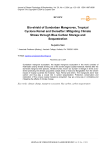
Статья обзорная
Sundarban mangrove ecosystem, the largest mangrove ecosystem in the world consists of freshwater swamp forests forming one of the world's largest coastal wetlands. Named after the dominant mangrove tree species, Heritiera fomes , known as ‘sundari’ in Bengal, it forms a bio-shield protecting the densely populated coastal areas of India and Bangladesh from the severe impact of tropical cyclones like Amphan, Yaas, Remal and others. The mangroves store ‘blue carbon’ and thus play a crucial role in carbon sequestration. Protection, conservation and restoration of this unique coastal mangrove ecosystem may go a long way in combating and mitigating the effects of climate change.
Бесплатно
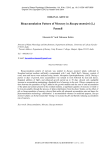
Bioaccumulation pattern of mercury in Bacopa monnieri (L.) Pennell
Статья научная
Bioaccumulation pattern of mercury was studied in Bacopa monnieri plants cultivated in Hoagland nutrient medium artificially contaminated with 5 and 10µM HgCl2. Mercury content of roots, stem and leaves were analysed using Atomic Absorption Spectrophotometry (AAS). During a period 12 days of growth, more accumulation was noticed in roots followed by stem and leaves. Repeated addition of HgCl2 and enhanced growth period up to 50 days showed only negligible increase in accumulation maintaining a threshold level of mercury in the root. When a comparison was done between the quantities of HgCl2 added to the growth medium and the sum of total accumulation of the plant and content present in the residual medium, a significant quantity of mercury is found to be lost presumably through the process of phytovolatilization from the plant. Studies on the effect of pH on bioaccumulation of mercury showed that acidic pH enhanced accumulation rate and hence for phytoremediation technology 'chlorination' is recommended whereas for medicinal purpose, Bacopa monnieri plants can be harvested after 'liming' to increase the pH and thereby reducing accumulation rate of mercury.
Бесплатно

Bioactive Components and Chemical Constituents of Some Important Legumes in Traditional Medicine
Статья научная
Legumes in traditional medicine play a key role in the world. In majority of countries, especially in Iran and China, western and traditional medicine has been practiced side by side of each other. The aim of this study is to review bioactive components and chemical constituents of some important legumes in East of Asia. All relevant papers in English language of researchers and scholars from various countries gathered. The soybean itself is composed of approximately 40% protein, 20% oil, 35% carbohydrates, and 5% trace minerals and other compounds. The most important functional components of soy are α-Linolenic acid, isoflavones, lecithins, lectins, linoleic acid, peptides, phytosterols, protein and saponin. Peanuts are considered an important source of oil, folate, antioxidants, protein, and essential fatty acids (linoleic), and it ranked fourth in oilseed crops in the world after soybeans, rapeseed, and cotton. Peanuts are considered an important source of oil, folate, antioxidants, protein, and essential fatty acids (linoleic), and it ranked fourth in oilseed crops in the world after soybeans, rapeseed, and cotton. It has been revealed the presence of flavonoids, tannins, terpenoids, saponins, steroids, alkaloids by positive reaction with the respective test reagent. Cow peas are valuable source of protein, carbohydrate, mineral and vitamins, and it also contain biologically active components including phenols, phytic acid, saponin, oligosaccharides, fiber and etc. Nutrition therapy according to traditional Asian medicine by considering tremendous benefits of legumes is quite effective at not only treating common diseases, but also its prevention.
Бесплатно
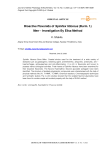
Bioactive Flavonids of Spinifex littoreus (Burm. f.) Merr - Investigation By Elisa Method
Статья научная
Spinifex littoreus Burm.f.Merr. Coastal shrubs used for the treatment of a wide variety of diseases such as galactogenic, blistering agent, antihelmenthic, antipyretic, antidiruetic, anti – haemorrhages, antileukaemias and anti-inflammatory. It is rich in flavonoids and known to possess various biological activities. Fresh leaves of Spinifex littoreus have been examined for their bioactive flavonoids. The flavonol Kaempferol, flavonol glycoside astragalin have been identified. The structure of isolated polyphenolic compounds were characterised with the help of physical methods like UV, 1H NMR, 13C NMR, Chemical reactions, Chromatographic techniques and hydrolytic studies The in-vitro studies showed that the isolated flavonol glycosides have been found to contain ample anti-oxidant property with the help of ELISA method.
Бесплатно
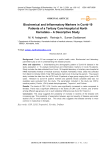
Статья научная
Background: Covid-19 has emerged as a public health crisis. Biochemical and laboratory parameters play a role in understanding the disease process. Aims and objectives: 1. Understanding the demographic pattern of Covid-19 disease in the study population. 2. To analyze biochemical and inflammatory markers in Covid-19 patients. Study includes the data collected from Covid -19 Hospital laboratory of a tertiary care hospital at KIMS (Karnataka Institute of medical sciences, Hubballi, Karnataka, India). Data was collected from March to October 2020 (Total 7800 patients had Covid-19 during this period). The present study includes the data from the 4478 Covid-19 patients of age group ranging from 1year to 99 years. Newborn to Covid-19 positive mothers and patients whose complete data was not available were excluded from the study. The parameters included in the study are CRP(c reactive protein), Ferritin, LDH (Lactate dehydrogenase), Troponin-I, and D-dimer. Results: The levels of CRP, LDH, Ferritin were significantly increased in males compared to females. There was a significant difference in the levels of CRP, LDH, Ferritin, and D-dimer among different age groups, but no such statistical difference was found for Troponin-I. Conclusion: This study suggests the possibility of increase in severity of the disease with increasing age. This possibility of association between age and severity of disease was earlier studied only on small sample size. This study also suggests that disease severity is more common in males than in females.
Бесплатно
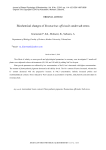
Biochemical changes of Rosmarinus officinalis under salt stress
Статья научная
The effects of salinity on some growth and physiological parameters in rosemary were investigated. 2 month-old plants were subjected to three salt treatments (50, 100, and 150 mM) by adding NaCl to the pots. Plant growth parameters not affected by low concentrations of NaCl, but it decreased with higher concentrations. The content of photosynthetic pigments decreased at all salinity levels. The Na+ content of leaves increased, whereas the K+ content decreased with the progressive increase in NaCl concentration. Salinity increased proline and malondealdehyde contents. Stress induced by NaCl caused an accumulation of proline, total phenolic and antioxidant in rosemary plant.
Бесплатно

